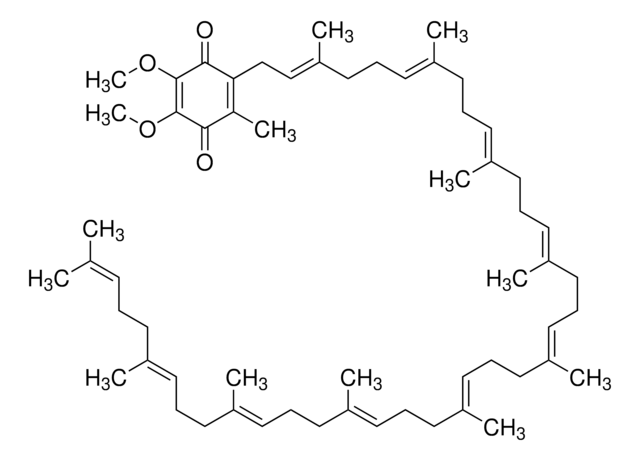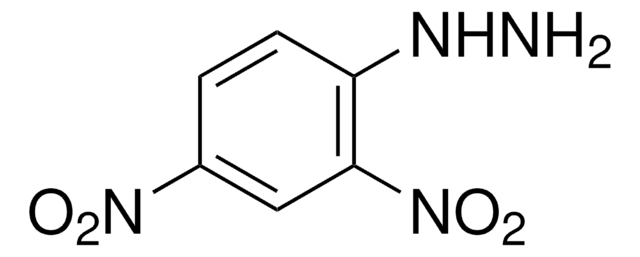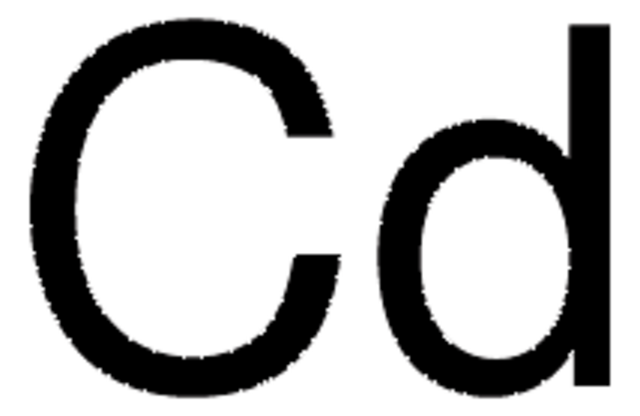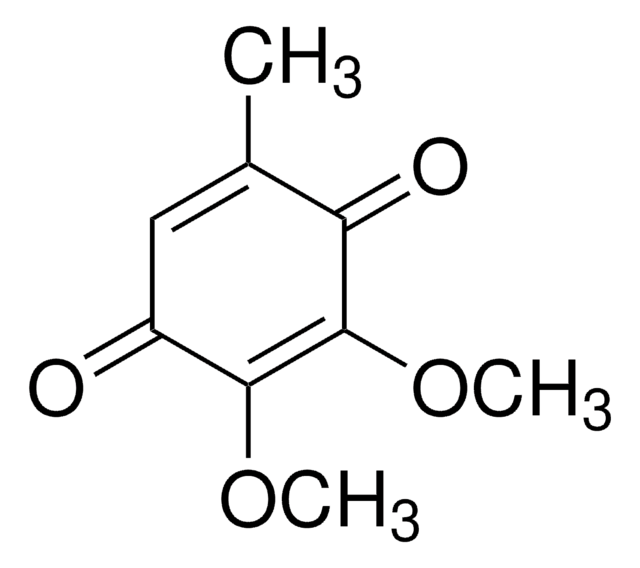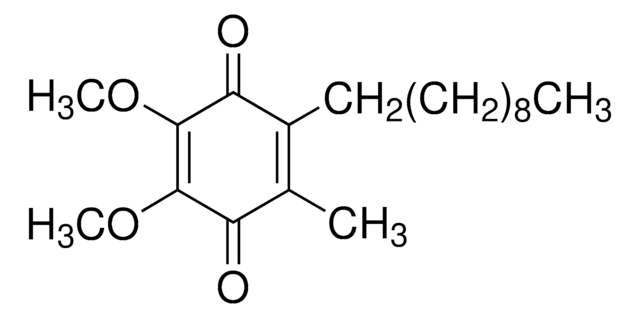07386
Coenzym Q10
analytical standard
Synonym(e):
Q-10, Ubichinon 50, Ubichinon-10
About This Item
Empfohlene Produkte
Qualität
analytical standard
Qualitätsniveau
Assay
≥97.5% (HPLC)
Form
powder
Haltbarkeit
limited shelf life, expiry date on the label
Verunreinigungen
≤1.0% water
Farbe
faint yellow to dark orange
mp (Schmelzpunkt)
49 °C
Anwendung(en)
cleaning products
cosmetics
food and beverages
personal care
Format
neat
Lagertemp.
−20°C
SMILES String
O=C(C(OC)=C1OC)C(C/C=C(C)/CC/C=C(CC/C=C(CC/C=C(CC/C=C(CC/C=C(CC/C=C(C)/CC/C=C(C)/CC/C=C(C)/CCC=C(C)C)\C)\C)\C)\C)\C)=C(C)C1=O
InChI
1S/C59H90O4/c1-44(2)24-15-25-45(3)26-16-27-46(4)28-17-29-47(5)30-18-31-48(6)32-19-33-49(7)34-20-35-50(8)36-21-37-51(9)38-22-39-52(10)40-23-41-53(11)42-43-55-54(12)56(60)58(62-13)59(63-14)57(55)61/h24,26,28,30,32,34,36,38,40,42H,15-23,25,27,29,31,33,35,37,39,41,43H2,1-14H3/b45-26+,46-28+,47-30+,48-32+,49-34+,50-36+,51-38+,52-40+,53-42+
InChIKey
ACTIUHUUMQJHFO-UPTCCGCDSA-N
Suchen Sie nach ähnlichen Produkten? Aufrufen Leitfaden zum Produktvergleich
Verwandte Kategorien
Allgemeine Beschreibung
Anwendung
- Coenzyme Q10 mitigates cadmium cardiotoxicity by downregulating NF-kB/NLRP3 inflammasome axis and attenuating oxidative stress in mice: Research demonstrates Coenzyme Q10′s effectiveness in reducing cardiac damage through antioxidant mechanisms and inflammation modulation, offering insights for potential human therapeutic applications (Antar et al., 2024).
- Adverse hematological profiles associated with chlorpromazine antipsychotic treatment in male rats: Preventive and reversal mechanisms of taurine and coenzyme-Q10: This study explores how Coenzyme Q10, along with taurine, can mitigate the negative hematological effects of chlorpromazine, suggesting its use in managing side effects in psychiatric treatments (Obukohwo et al., 2024).
- Nutritional Strategies for Muscle Atrophy: Current Evidence and Underlying Mechanisms: Discusses the role of Coenzyme Q10 in muscle health, particularly in preventing atrophy through mitochondrial support and enhancing cellular energy metabolism, pertinent for sports medicine and aging (Shen et al., 2024).
- Identification of a family of species-selective complex I inhibitors as potential anthelmintics: Although indirectly related, this study hints at the role of mitochondrial function, which could be linked to Coenzyme Q10′s effects in similar pathways, suggesting a novel application area in parasitology and infectious diseases (Davie et al., 2024).
Vorsicht
Empfohlene Produkte
auch häufig zusammen mit diesem Produkt gekauft
WGK
WGK 3
Flammpunkt (°F)
Not applicable
Flammpunkt (°C)
Not applicable
Choose from one of the most recent versions:
Analysenzertifikate (COA)
Sorry, we don't have COAs for this product available online at this time.
If you need assistance, please contact Kundensupport
Besitzen Sie dieses Produkt bereits?
In der Dokumentenbibliothek finden Sie die Dokumentation zu den Produkten, die Sie kürzlich erworben haben.
Kunden haben sich ebenfalls angesehen
Unser Team von Wissenschaftlern verfügt über Erfahrung in allen Forschungsbereichen einschließlich Life Science, Materialwissenschaften, chemischer Synthese, Chromatographie, Analytik und vielen mehr..
Setzen Sie sich mit dem technischen Dienst in Verbindung.